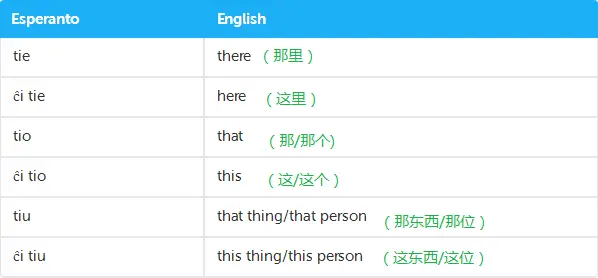多邻国世界语Tips and notes question 疑问篇(中英对照)

疑问篇
ĉu
As covered in Basics 2, Ĉu is used to introduce a question.
Ĉu在基础篇2中有提及过,它用于引入问题。
For example:
例如:
Ĉu vi volas danci? = Do you want to dance?
你想跳舞吗?(不想,滚)
Ĉu vi amas ŝin aŭ min? = Do you love her or me?
你爱我还是她~~~~
In the middle of a sentence, ĉu means "whether".
Ĉu如果放在句子的中间,那它的意思就是"是否"
For example:
例如:
Ŝi demandas min, ĉu mi volas danci.
She asks me whether I want to dance.
(or: She asks me if I want to dance.)
她问我是不是想跳舞
Ŝi volas scii, ĉu mi parolas Esperanton.
She wants to know whether I speak Esperanto.
(or: She wants to know if I speak Esperanto.)
她想知道我是否说世界语。
Note that in English we often use the word "if" interchangeably with "whether", as in the examples above, but in Esperanto this is not correct. We can never use the word "se" (if) in place of the word ĉu.
注意:正如上面那些英语例句,在英语里面,if和whether通常都是能够互换的,不过在世界语里就行不通了,我们不能用se(if,如果)来代替ĉu
correlatives ending in –u
以-u结尾的关联词(PMEG中称之为词表词或表解词)
The correlatives ending in -u (kiu, tiu, etc.) usually come before a noun.
以-u 结尾的关联词通常在一个名词的前面
Notice how they take -j and -n endings just like adjectives. For example:
注意一下,它们加-j和-n的方法和形容词的一样:
Kiun libron vi legas?
Which book are you reading?
你在看哪本书?
Mi volas legi tiujn librojn.
I want to read those books.
我想看那些书
They appear without a noun only if the context makes what is being talked about clear. For example:
如果情景中已经说明清楚,那么它们后面就不用跟名词:
Jen kelkaj bonaj libroj. Kiun [libron] vi volas legi?
Here are some good books. Which [book] would you like to read?
这有一些好书,你要看哪本?
Without other information, assume that kiu and tiu (and any other correlative ending in-u) refer to a person. For example:
若是没有任何信息,就假定kiu和tiu(还有其他以-u结尾的关联词)是在指代一个人。
Kiu venas? = Who is coming?
谁来了?

Kio estas tio? Tio estas libro.
What is that? That is a book.
那是什么?那是本书
Kiu estas via libro? Mia libro estas tiu.
Which is your book? My book is that one.
哪本书是你的?我的是那本
Kion vi volas? Mi volas tion.
What do you want? I want that.
你想要什么?我想要那个
Kiun vi volas? Mi volas tiun.
Which do you want? I want that one.
你想要哪一个?我要那一个
Kiujn vi volas? Mi volas tiujn.
Which ones do you want? I want those.
你想要哪些?我想要那些。
ĉi
Ĉi expresses close proximity when used immediately before or after ti- words. For example:
Ĉi放在ti-开头的单词的前面/后面的时候,表达的是接近,靠近的意思:

Note: Since ĉi can go before or after ti- words, these are also valid: tie ĉi, tiu ĉi, tio ĉi.
因为ĉi能够放在ti-开头的关联词的前面和后面,所以tie ĉi, tiu ĉi, tio ĉi都是正确的。
Kien ? tien
Adding -n to kie or tie shows movement towards a place. For example:
kie或者tie加上-n词尾,表示移动到一个地点:
Kie vi estas? Mi estas ĉi tie.
Where are you? I am here.
你在哪?我在这。
Kien vi iras? Mi iras tien.
To where are you going? I am going to there.
你去哪?我去那
Note that the "to" is usually dropped in English, so this would be translated as "Where are you going? I am going there."
在英语中"to"通常被忽略掉,所以上面的例句也能翻译成"Where are you going? I am going there."
Due to this lack of distinction in English, many English speakers have trouble remembering to add -n to tie and kie when talking about movement towards a place.
正因为英语的这种缺乏方向,导致很多英语母语者在用世界语表达移动到那个方向时会忘记给tie/kie加上词尾-n。
kiam
Kiam means "when".
kiam意思为when(什么时候)
原文:http://www.duolingo.cn/skill/eo/Questions
翻译:vanilo
封面:害怕.PY交易版

